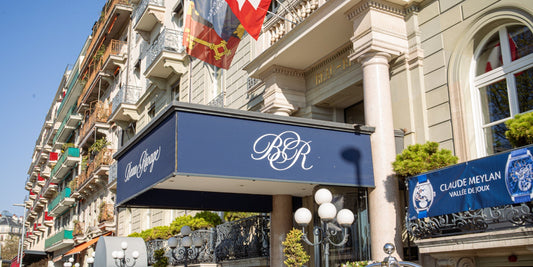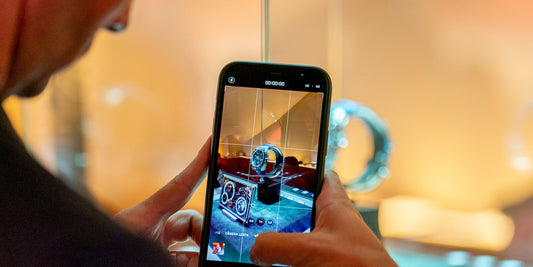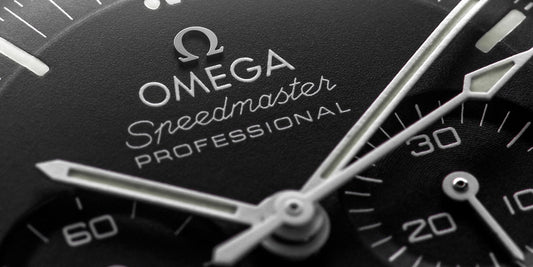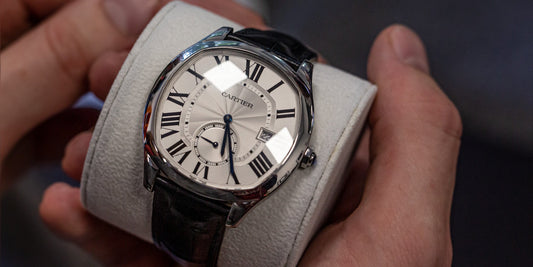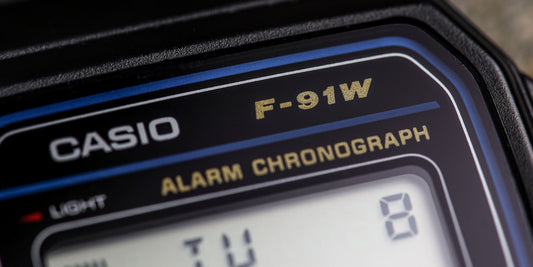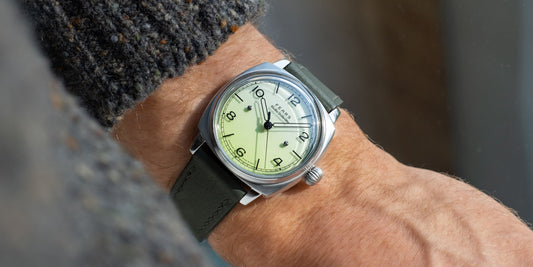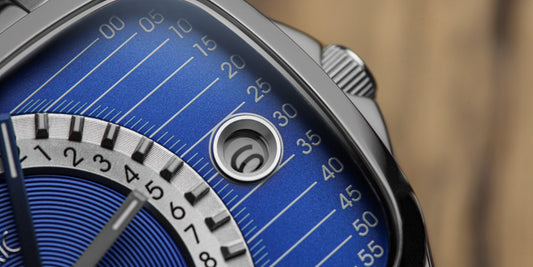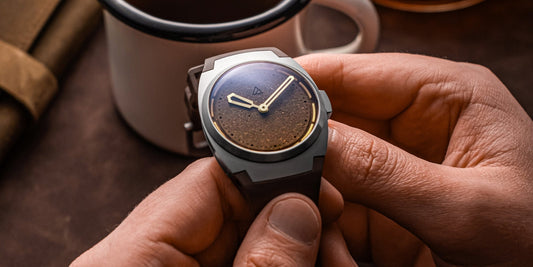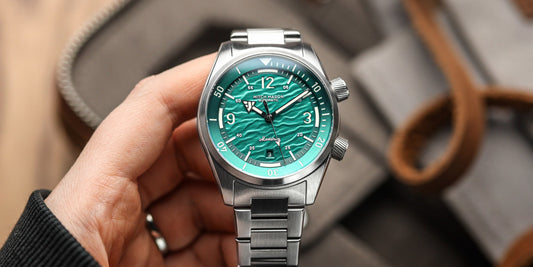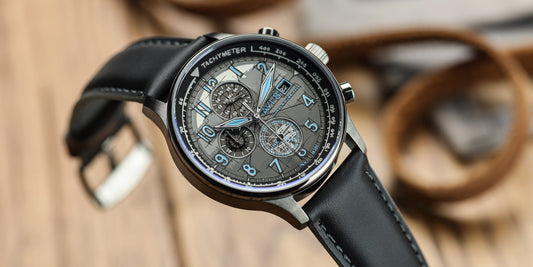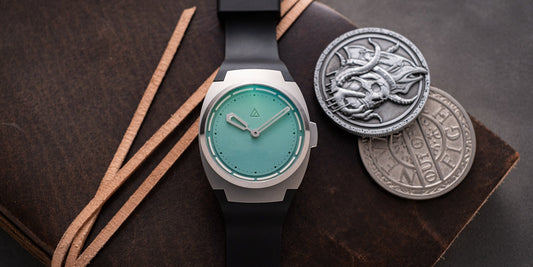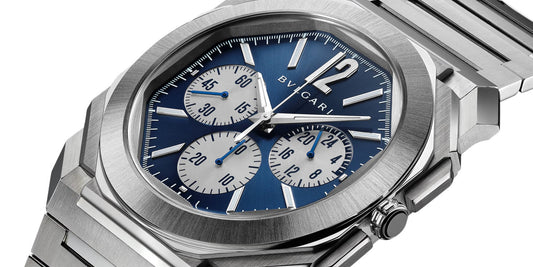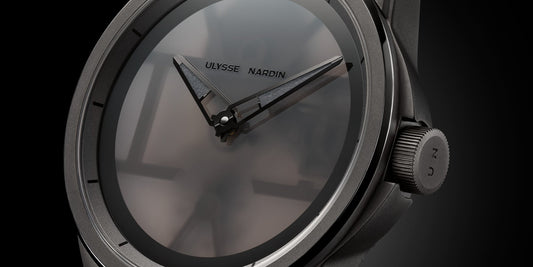When it comes to Glashütte Original, there is something I’m always compelled to mention, despite not being entirely sure if anyone wants me to. For the sake of scratching that itch and being true to myself (and Glashütte Original), I’m going to say it, even if it draws the ire of rival brands and one or two commenters who might feel I’ve got this wrong (and if you do feel that way, please let us know in the comments — there’s nothing quite as enjoyable as a bit of healthy debate, after all).
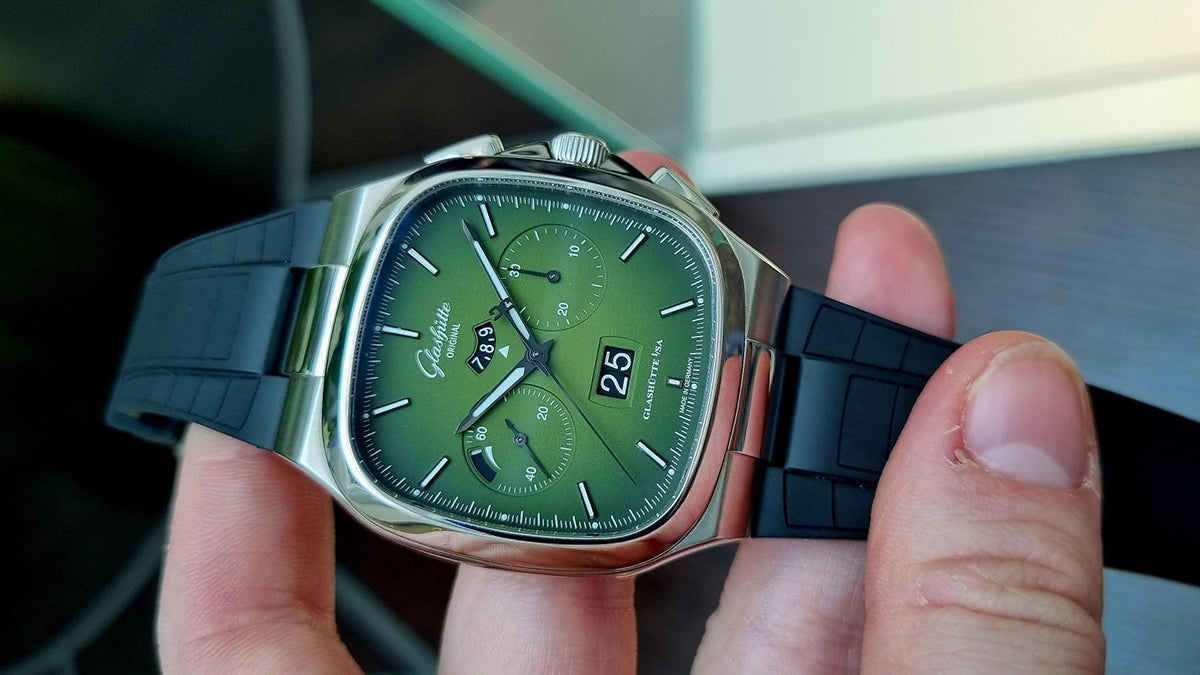 Seventies Chronograph Panorama Date - Credit WatchGecko
Seventies Chronograph Panorama Date - Credit WatchGecko
Glashütte Original’s name could not be more apt, because, despite the company in its current guise having only been in operation for 32-and-a-bit years, it is the oldest watchmaker in Glashütte.
Controversial, I know. “What about A. Lange & Söhne” I hear some of you cry. Fair enough, the oldest brand in Glashütte, if we go all the way back to the genesis of watchmaking in the region, is Lange, but what happened to that company in the intervening years is often glossed over or simply ignored for the sake of cleaner story-telling.
The truth is, nothing about the history of Glashütte watchmaking is clean or easy. The early years were straightforward enough, with Ferdinand Adolph Lange transforming a community that had, for generations, made a living in the silver mining trade, into the glittering paradise of Haute Horlogerie we now enjoy today. His apprentices and contemporaries like Moritz Grossmann and Julian Aschmann went on to found their own brands, expanding on their tutelage and raising Glashütte’s profile internationally.
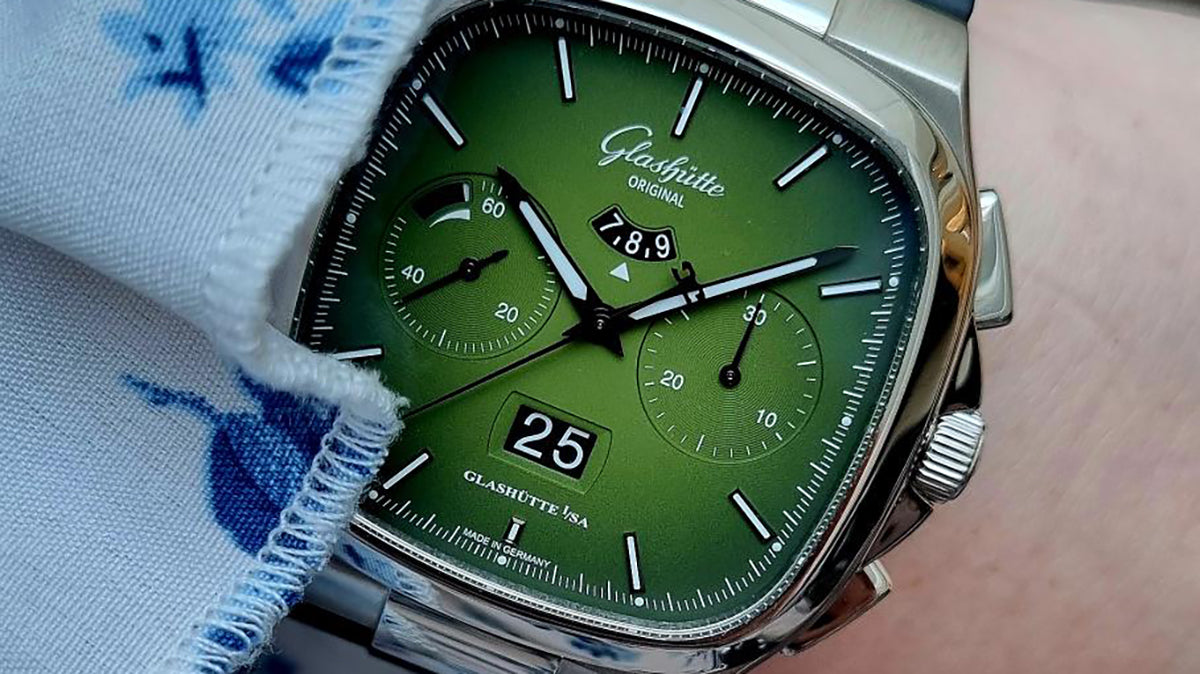 Seventies Chronograph Panorama Date - Credit WatchGecko
Seventies Chronograph Panorama Date - Credit WatchGecko
But then, in the middle of the 20th century, something happened that would forever alter the fabric of the German watchmaking scene. Following the Second World War, Glashütte, along with the rest of East Germany, became part of the German Democratic Republic (GDR) and was subject to Soviet control until the late 1980s.
During that period, it was not allowed for anyone to own a private enterprise. All of the many and various brands in Glashütte were brought together under one name: the GUB, or Glashütte Uhren Betrieb (basically, Glashütte Watch Conglomerate).
The Soviets knew what they had in Glashütte and so rather than stop the production of watches entirely, they simply instructed the GUB to make simpler, more affordable watches for the state. The GUB was extremely active during this time, churning out thousands of low-grade-but-functional timepieces that can still be found on the pre-owned market today (with many of them in excellent condition thanks to large numbers of New Old Stock watches from this era popping up every now and then). If you’re a fan of German watchmaking history but can’t afford to buy one of the modern pieces from any of the ten active companies in the town, it’s a great way to sample the output from a very tumultuous period of Glashütte’s past.
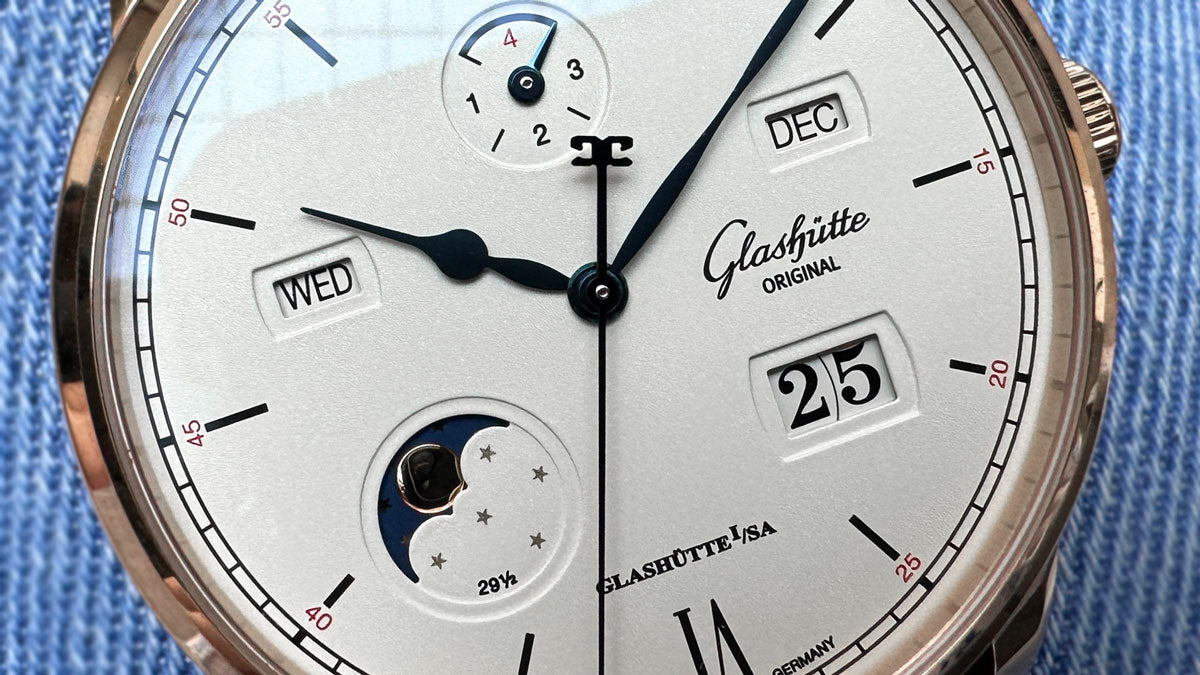 Senator Excellence Perpetual Calendar - Credit WatchGecko
Senator Excellence Perpetual Calendar - Credit WatchGecko
That means for more than three decades, what had been A. Lange & Söhne was technically part of the relatively faceless GUB. It looked to be an ignominious end for a brand that never deserved such a fate, but the fall of the Berlin Wall in 1989 eventually led not only to the reunification of Germany, but also the renaissance of true German watchmaking, and Lange’s re-foundation in 1994, under the steady hand of Walter Lange, the great-grandson of the great man himself.
Meanwhile, however, the GUB didn’t technically cease to exist. While many of the companies it had consumed were simply restarted by descendants of the original founders or opportunistic businessmen keen to bring quality back to the region (and make a packet in the process), the remaining shell was renamed Glashütte Original in 1991 and continued to operate.
The uncomfortable truth of all this is, of course, the only direct, unbroken line of activity that can be traced back to the small workshop opened by Ferdinand Adolph Lange in 1845 goes through the heart of Glashütte Original.
 Senator Excellence Perpetual Calendar - Credit WatchGecko
Senator Excellence Perpetual Calendar - Credit WatchGecko
When the Swatch Group acquired GO in 2000 it knew what it had in its hands: a license to punch with the big boys. The brand had the history, albeit a potted one, and the Swatch Group had the resources to make Glashütte Original a true rival to the high-flying A. Lange & Söhne, which had hit the ground running since it reentered the market.
While the brands may never have seen eye-to-eye, this heavyweight clash has been wonderful for both and for Glashütte as a whole. Like prime prize fighters, they have pushed each other to their limits. To say they’ve gotten the best out of one another barely needs saying. A quick leaf through the catalogues will settle any debate on that front. Lange continues to be a leading light, but GO has carefully plotted a course that allowed it to define its own identity with a host of “more” accessible models while dropping the occasionally horological humdinger to remind everyone that the brand really does know what it’s doing (and that you should too).
Possibly my favourite watch in my own collection is the Glashütte Original Seventies Chronograph in “vibing orange” (which is funnier when you get someone from GO to say it). I adore the Seventies collection but was not an immediate convert to it. The first time I ever saw one in real life was Baselworld 2017, on the wrist of my good friend and mentor Ariel Adams. He proudly slipped the blue-dialed timer off his wrist and handed it to me. I looked at it aghast.
 Seventies Chronograph Panorama Date - Credit Guest Author
Seventies Chronograph Panorama Date - Credit Guest Author
“No way you bought one of these?” I said, incredulously (Ariel, despite a truly massive collection, rarely buys new pieces himself).
“I did,” he smiled, knowingly.
“But why?” I baulked. “It’s… It’s… So goofy!”
“You don’t get it.” His eyes had their characteristic twinkle. “But you will.”
As he often is, he was right. The more time I spent with his chronograph and the subsequent iterations I was able to handle in the process of reviewing them, the more I realised that I had not only misjudged the watch but the entire brand of GO also.
True quality is hard to define. It can be explained passably, but it really has to be felt to be understood. Black-and-white specifications never tell the whole story. Even a list of surface finishes or movement decorations can’t accurately gauge the difference between those finishes and decorations being applied poorly, well, or expertly. Yes, the words give us clues, but witnessing it all combined, hanging together like magic, is a different experience entirely. Owning that particular watch has been revelatory for me. It helped me get even closer to the craft I’ve called my profession for 21 years. And yet, it seems old habits die hard…
 Glashütte Original SeaQ - Credit Glashütte Original
Glashütte Original SeaQ - Credit Glashütte Original
When I was writing for Fratello, one of my colleagues suddenly and apparently out of nowhere, sold his Rolex Submariner and bought a Glashütte Original SeaQ. By that point, I had come over to Ariel’s way of thinking regarding the Seventies chronograph but hadn’t yet bought my own, and thus was still a little sceptical of the brand’s ability to catch lightning in a bottle for a second time.
As seems to be frequently proved these days, I am an idiot.
We at Fratello scoffed at our colleague’s purchase. We thought him mad. It seemed such a random choice. There seemed to be no forethought (or none that we could discern) in his decision. A “knee-jerk catastrophe”, I think I called it. And I couldn’t have been more wrong.
 Glashütte Original SeaQ - Credit Glashütte Original
Glashütte Original SeaQ - Credit Glashütte Original
The SeaQ does exactly what the Seventies Chronograph does but in an entirely different way. It is a far more normal-looking watch. On paper, you might even find it boring. However, on the wrist, it hits the high notes. The execution is flawless. The increase in diameter from the source material from around 35 mm to a “whopping” 39.5 mm is surprisingly sensitive and effective. It wears much, much smaller and looks like a little drop of heaven on the wrist. It isn’t cheap, but its price is comparable to the Submariner. For my money, it is a far superior watch, which benefits from a delicacy of touch I still find it hard to believe came from a Swatch Group-owned brand (which generally has the subtlety of a freight train crashing a funeral).
But therein lies the rub: while Glashütte is owned by the Swatch Group, it seems to exist on an island. One of the people we spoke to during our visit to the manufacture termed GO, “the most independent non-independent watch brand there is.” And that’s to the Swatch Group’s credit. To understand the German market is different, to let Glashütte Original figure out its own path, to take a hands-off approach rather than micro-managing the brand to death was an inspired move, and reminded us in the process that sometimes, even the most turbulent tales have a happy ending.


